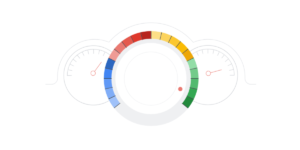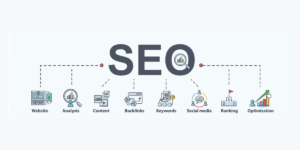
The World Wide Web, often abbreviated as WWW or simply the web, is a vast system of interconnected documents and resources that are accessed via the Internet. It has revolutionized the way we communicate, access information, and conduct business on a global scale. Understanding the basics of the World Wide Web is essential in today’s digital age.
What Is The World Wide Web?
The World Wide Web is not the same as the internet, although the two terms are often used interchangeably. The internet is the infrastructure—a network of networks that connects computers worldwide. On the other hand, the World Wide Web is a collection of interconnected documents and other resources, linked by hyperlinks and URLs (Uniform Resource Locators), accessible via the internet.
History Of The World Wide Web
The concept of the World Wide Web was first created by Sir Tim Berners-Lee (first webmaster) in 1989 while working at CERN, the European Organization for Nuclear Research. He envisioned a way to share information among researchers by creating a system of hyperlinked documents. In 1991, he released the first web browser and server software, thus laying the foundation for the modern web. His first website was released on August 6th, 1991.
How Does The World Wide Web Work?
At its core, the World Wide Web operates on a client-server model. When a user wants to access a web page, they enter a URL into their web browser. The browser then sends a request to the appropriate web server, which retrieves the requested web page and sends it back to the browser, where it is displayed to the user.
Key Components of the World Wide Web:
Web Servers: These are computers that store web pages and other resources and serve them to users upon request. Web servers use protocols like HTTP (Hypertext Transfer Protocol) to communicate with web browsers.
Web Browsers: These are software applications that allow users to access and navigate the World Wide Web. Popular web browsers include Google Chrome, Mozilla Firefox, and Safari.
Hyperlinks: Hyperlinks, or simply links, are elements within web pages that allow users to navigate between different resources on the web. They are typically highlighted text or images that, when clicked, take the user to another web page or resource.
HTML (Hypertext Markup Language): HTML is the standard markup language used to create web pages. It provides the structure and formatting for web content, including text, images, and multimedia elements.
CSS (Cascading Style Sheets): CSS is a stylesheet language that is used to control the presentation of web pages written in HTML. It allows web designers to specify the layout, colors, fonts, and other visual aspects of a webpage.
JavaScript: JavaScript is a programming language that is commonly used to add interactivity and dynamic content to web pages. It runs on the client-side, meaning it is executed by the user’s web browser.
The Impact Of The World Wide Web
The World Wide Web has had a profound impact on virtually every aspect of society. It has revolutionized communication, allowing people to connect with others around the world instantly. It has democratized access to information, making knowledge more accessible to people everywhere. It has also transformed industries such as commerce, education, and entertainment, creating new opportunities and challenges.
The World Wide Web is a remarkable achievement that has transformed the way we interact with information and each other. Understanding its history, workings, and impact is crucial in navigating the digital landscape of the 21st century. As the web continues to evolve, it will undoubtedly shape the future of society in ways we have yet to imagine.

My name is Greg and I have 20 years of experience in creating and managing websites. I have 6+ million views collectively on social media platforms like Quora, Facebook, LinkedIn, and Instagram. Contact me to get your website optimized for search engines.











